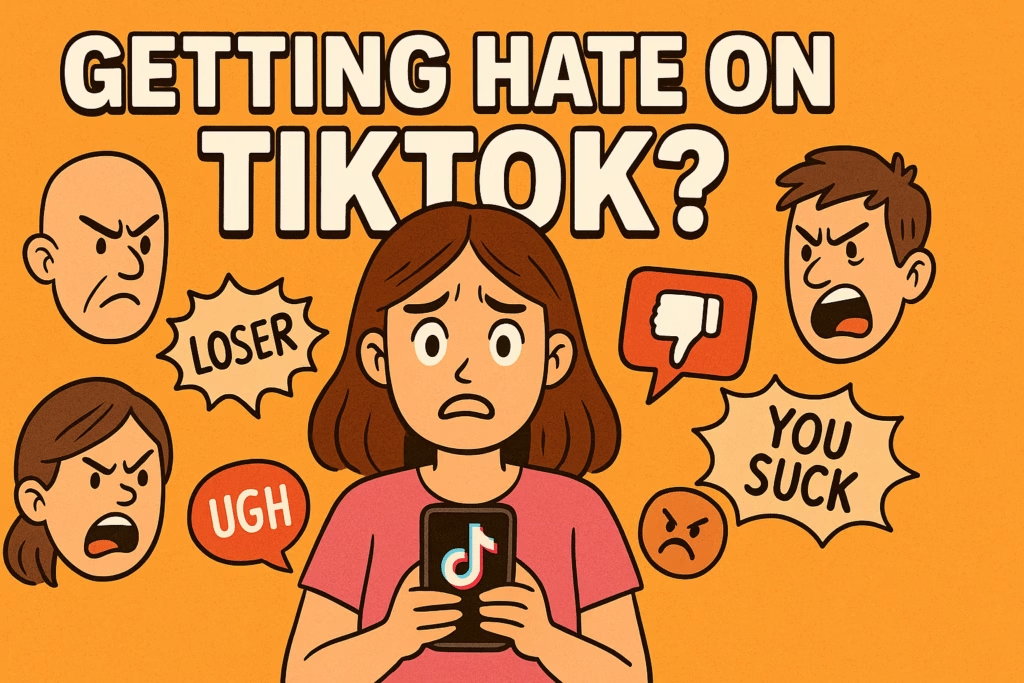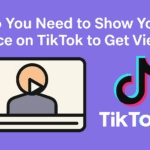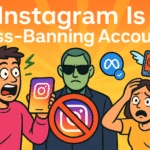You hit 1,000 followers and think you’re finally gaining traction. Two weeks of consistent posts. A couple hundred likes. Then — boom — you get told to delete your life.
No context. No provocation. Just hate on TikTok.
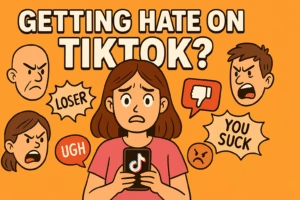
The moment your content touches a nerve — or worse, an algorithm — the trolls show up. It’s not about what you posted. It’s the fact that you posted anything. Success triggers resentment. Engagement triggers outrage. And TikTok eats it up.
So if you’re wondering, “Are people okay?” — no. But there’s a reason for it. And once you understand the system, you can stop letting it ruin your day and start letting it boost your reach.
TikTok Doesn’t Punish Hate — It Amplifies It
Hate comments don’t get buried on TikTok. They get rewarded. Every angry reply, sarcastic comeback, or defensive explanation tells the algorithm, “People are engaging — push this video harder.” And it does. The more heated the thread, the more visibility you get. That’s not a bug. It’s the engine.
TikTok’s algorithm doesn’t know the difference between love and hate. It only sees interaction. If a comment triggers a dozen replies, it gets promoted. If your video sparks arguments in the comments, TikTok thinks it’s valuable. This means the worst people — the ones who tell strangers to “delete your life” — often become the most effective at boosting your video’s reach.
And no, moderation won’t save you. TikTok’s reporting system is broken. You can get flagged for saying “silly goose” and punished for calling someone “silly man” while actual abuse stays up. That’s because moderation is automated, inconsistent, and slow. The trolls know this. They count on it.
So when someone says, “Don’t take it personally,” they’re not being dismissive. They’re describing the cost of growth on a platform that profits from negativity.
Why Growing on TikTok Means Building Emotional Armor
The moment your videos start getting traction, you stop being seen as a person — you become content. People project, insult, and attack without context because, to them, you’re not real. You’re just pixels on a screen. And the more attention you get, the worse it becomes. This isn’t an anomaly. It’s a pattern. Every creator who grows fast hits this wall.
That’s why emotional resilience isn’t optional. It’s required. If you can’t handle hate, TikTok will eat you alive. The hate isn’t personal — but the impact is. And no amount of “just ignore it” helps when the comments come in waves. The insult you read right before bed will stick. The weirdly specific dig about your appearance will linger. And if you’re not careful, it’ll change how you create.
The solution isn’t just thick skin. It’s a shift in mindset. You need to treat comments like weather. Some days are sunny, some days are storms. Don’t build your self-worth on audience reaction. Don’t let dopamine from likes make you vulnerable to the crash of insults. Build routines that protect your mental bandwidth:
– Disable comments when needed.
– Use filters aggressively.
– Schedule posting time, not scrolling time.
– Block and move on. No debates. No rebuttals. No explanations.
If your goal is growth, protect your ability to show up. That’s the real asset trolls are trying to destroy.
How Hate Comments Can Actually Help Your Reach (If You Play It Right)
Here’s the twisted part: hate comments fuel growth. Every time someone insults your voice, your face, your choice of words — they’re handing you reach on a silver platter. TikTok’s algorithm doesn’t care whether the comments are positive or toxic. All it sees is interaction. That means the angrier the troll, the more valuable they become.
Creators who understand this don’t argue back — they farm it. Some even bait it. Drop a slightly controversial opinion. Misspell something on purpose. Use an unconventional format. The goal isn’t to make everyone happy. It’s to make someone comment. Rage, correction, sarcasm — it all counts.
This doesn’t mean you need to start ragebaiting every video. But you should stop deleting hate comments unless they’re clearly abusive or dangerous. Most of the time, they help your visibility. Some creators even like them or reply with “appreciate the boost!” — not out of pettiness, but out of strategy.
And if you really want to turn hate into momentum? Clip the meanest comment, remove the name, and make it into new content. “Someone said this about my last video. Here’s what I think.” You just got a second round of engagement off the same hate. That’s creator judo.
The Real Reason TikTok Feels So Hostile Right Now
TikTok has changed. What used to be a space for silly dances and creative edits is now crawling with outrage, judgment, and anonymous cruelty. And no, it’s not your imagination — the vibe really is worse than it used to be. That’s because TikTok’s growth turned it into something bigger than a social app. It became a cultural warzone.
A few things happened at once. First, TikTok got older. The app’s core audience expanded beyond teens to include adults with opinions, agendas, and way too much time on their hands. Then came the algorithm tweaks. Controversial content started outperforming safe content. Nuance died. Comments became battlegrounds.
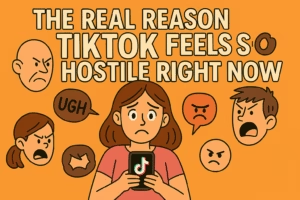
And then came the political spillover. People from other toxic platforms like X and Truth Social migrated to TikTok, bringing their hostility with them. Mix that with TikTok’s low barrier to entry and you now have millions of people with zero content, zero followers, and maximum venom, waiting to unleash on anyone gaining traction.
The result is a platform where negativity is normal, and the emotional cost of visibility keeps rising. But understanding the landscape is the first step to surviving it. You’re not going crazy. You’re not being oversensitive. You’re just noticing what the system quietly incentivizes.
How to Keep Posting When the Hate Starts to Get Personal
There’s a point where the comments stop being general noise and start hitting you directly. They pick at your insecurities. They drag your family, your voice, your partner, your culture. This isn’t theoretical. It happens fast, and it catches most new creators off guard. You can’t just “be unbothered.” That advice is useless. The real solution is system-based, not emotion-based.
First, set up your filters. TikTok lets you block specific words and phrases — use that feature like your mental health depends on it. Block out slurs, insults, body-shaming language, and any term that’s ever been weaponized against you. This doesn’t make you weak. It makes you strategic.
Second, compartmentalize your time on the app. Create content in one window. Review comments in another. Don’t keep refreshing. Don’t sit in the replies. Don’t engage late at night when you’re tired. Run your account like a business, not a public therapy session.
Third, use automation to distance yourself. Tools like Blaze AI let you schedule posts and moderate comments without staying glued to the app. That separation helps you focus on creation, not emotional reaction.
Finally, remember: posting through hate is a skill. The first time will shake you. The tenth time will sting. But eventually, it becomes noise. And if you keep posting, you become the one thing trolls hate most — someone they can’t stop.
When to Clap Back, When to Block, and When to Monetize the Madness
Not every hate comment deserves silence. Sometimes, clapping back is the most strategic move — but only when it amplifies you, not the troll. If your response is funny, sharp, or shows off your confidence, it can flip the narrative. But if you’re emotional, defensive, or rambling, it feeds their ego and drains yours.
The golden rule is simple: never clap back from a place of anger. Wait. Reread it. Ask yourself, “Can I turn this into content? Can I turn this into a win?” If yes, go for it. If not, hit block without hesitation. You don’t owe anyone access to your space. The block button isn’t weakness — it’s strategy. It protects your bandwidth so you can create more and react less.
Now, here’s where it gets fun: hate can be monetized. Screenshots of the wildest comments make for great stitch material. Response videos turn trolling into engagement. And if you’re pushing affiliate products, each new comment keeps your video in circulation longer. Hate boosts reach. Reach boosts clicks. Clicks boost revenue.
There’s power in not just surviving the hate — but using it. Trolls want to hijack your energy. Don’t let them. Hijack theirs instead.
Tools That Can Shield You from the Worst Without Killing Engagement
You don’t need to suffer to succeed. The smartest creators don’t just post and pray — they set up systems that protect their mental health and boost performance. It starts with comment filters. TikTok’s native tools let you block words, approve comments manually, or limit who can reply. Use them aggressively. Don’t wait until things get toxic. Set the rules before the chaos hits.
Then go beyond TikTok. Tools like Blaze AI let you schedule content without opening the app. That matters. You post without seeing the hate right away. You get distance. You stay focused on creation, not reaction. Blaze also supports shadow-mode posting, letting you fly under the radar while testing new formats without the same exposure risk.
Use MetaHashtags to ride trends without needing to bait controversy. It helps you get discovered for the right reasons — relevance and timing — not drama.
If you’re serious about faceless or low-interaction growth, pair that with The Social Proxy. It keeps your account clean and lowers the chance of moderation flags or algorithm suppression — especially important when videos get reported by trolls.
The goal isn’t to hide. It’s to control your exposure. Let the content go viral, not your emotions.
Final Thoughts — If You’re Getting Hate, You’re Doing Something Right
Hate is not a sign that you’ve messed up. It’s a sign that your content is finally being seen. No one gets hate on videos that don’t matter. You only get it when you cut through the noise. When you trigger emotion. When your content forces someone — even an idiot — to stop and type something. That’s not failure. That’s traction.
So don’t fold. Don’t disappear. Don’t let faceless strangers make you doubt your voice. Their comments say more about their boredom than your worth. If you believe in what you’re making, keep posting. Block when necessary. Filter when smart. Clap back when it builds you up. But never let them stop the flow.
Growth on TikTok is messy. It’s noisy. It’s emotionally expensive. But the creators who win are the ones who stay the course — not because they’re unbothered, but because they’ve built the armor to keep showing up.
If they’re hating? You’re probably doing something right.
